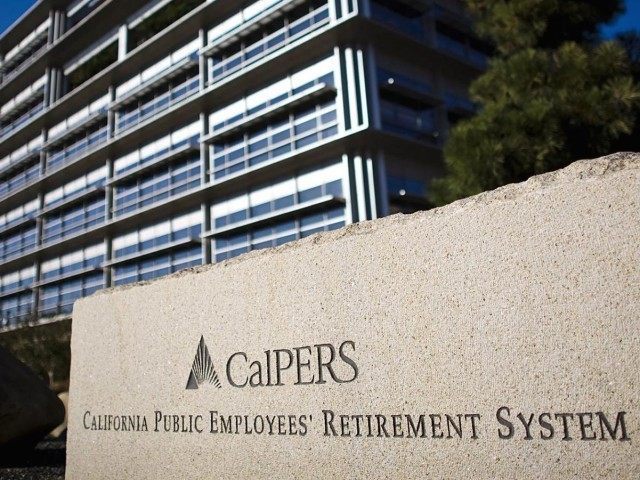Despite the rising panic over the solvency of California public pension plans, CalPERS’ annual report no longer prominently discloses what additional percentage of employee pay that each of its state, school and local clients cover each month for employee pensions.
The first page of last year’s valuation section for CalPERS’ Investment & Financial Reports disclosed that the Costa Mesa police pension plans’ “CalPERS rate” the city must contribute each month to the pension plan over the next year would be 55.6 percent of pay.
As America’s largest public pension plan with $302 billion of assets, CalPERS provides pension asset management for 1,815,699 members, including 1,204,621 active and former employees, plus 611,078 retirees. State and local government each represent about 30 percent of the members, while schools represent 40 percent of membership.
CalPERS has a checkered record for using unrealistically high investment return assumptions to minimize what its government clients have to contribute each month as a percentage of employee pay to stay solvent for the next 30 years. Despite estimating that its investments would earn a 7.5 percent return each, CalPERS only made 0.61 percent for its last June fiscal year and just 2.4 percent for the prior 12 months.
Due to growing criticism, CalPERS cut its annual earnings assumption in November to 7 percent and admitted that the 25 percent unfunded pension plan had pension debt of about $139 billion.
But Stanford University’s latest “U.S. Pension Tracker” report estimates that if CalPERS used the same risk-free 20-year Treasury Bond rate of 2.75 percent that U.S. Congress uses to estimate the Social Security liability, CalPERS clients would be over 75 percent unfunded and have a shortfall of about $964.4 billion.
Despite this horrendous potential liability, CalPERS has revised its report in a manner that seems to indicate that its government clients will be able to contribute less next year.
The first page of this year’s CalPERS Investment & Financial Report valuation for the Costa Mesa police pension plan discloses an “employer normal cost rate for next fiscal year of 20.2 percent of pay,” an “unfunded liability payment of $5.9 million,” and an employee PEPRA (Public Employees Pension Reform Act) “rate of 11.5 percent.”
The average Costa Mesa taxpayer trying to figure out what the new “CalPERS’ rate” means for a city cop would generally expect this to mean that the monthly pension plan contribution had fallen almost in half to a rate of 31.7 percent.
But if they understood what this new mumbo-jumbo mean,s and could actually do the actuarial math, they would discover that the “CalPERS rate” for the next fiscal year is set to jump to 59.9 percent.
CalPERS, in a news release, commented that many of its 3,007 employers “will see a 30 to 40 percent increase in their current unfunded accrued liability payments.” According to the authoritative Calpensions blog, CalPERS is now going to be “reporting the pension debt using a dollar amount, not the percentage of pay.”
CalPERS says the change in how the state, schools and local government reports will “address potential funding issues that could arise from a declining payroll or reduction in the number of active members.” But the California public may have just lost the ability to ascertain what the monthly cost for public employee pensions really is.

COMMENTS
Please let us know if you're having issues with commenting.